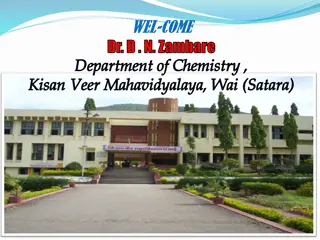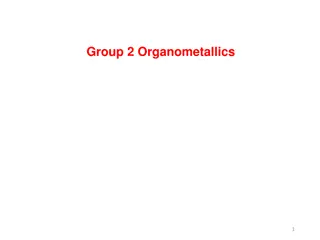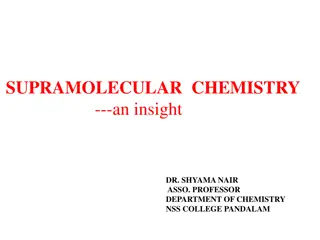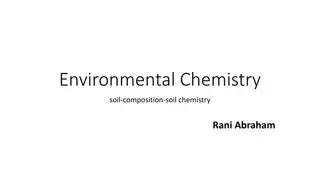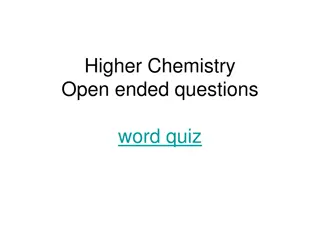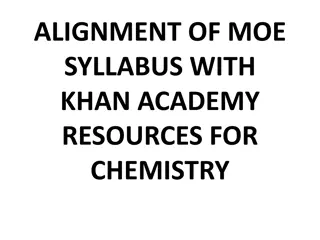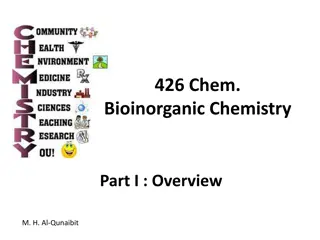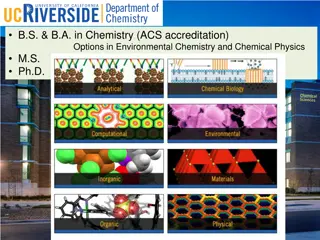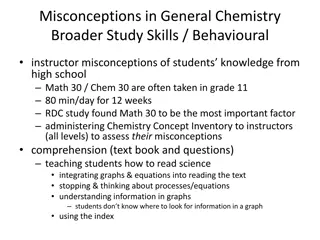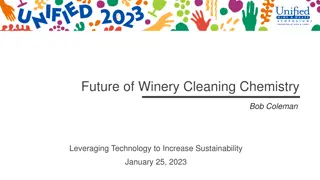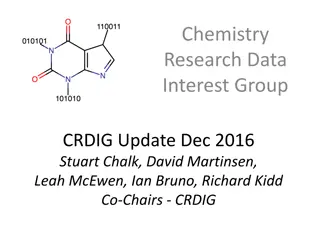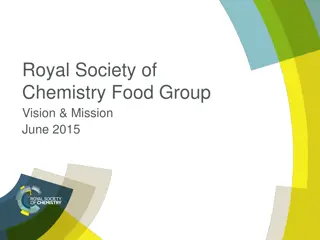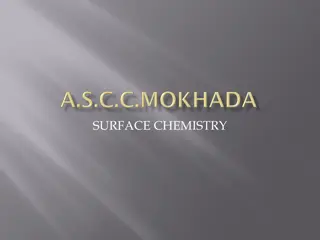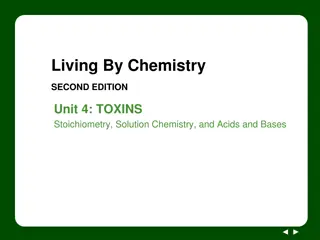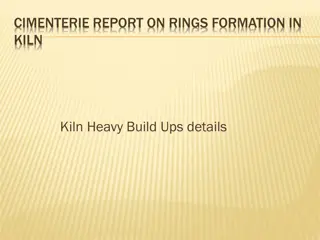
Group 18 Chemistry Highlights: Elements, Properties, and Reactions
Explore the intriguing world of Group 18 chemistry, covering nonmetals, metals, metalloids, and noble gases. Delve into electron configurations, isotopes, and chemical reactions of elements like helium, neon, argon, krypton, xenon, and radon. Witness the unique properties and reactions of these fascinating elements, including key milestones in their chemical behavior and compound formations.
Download Presentation

Please find below an Image/Link to download the presentation.
The content on the website is provided AS IS for your information and personal use only. It may not be sold, licensed, or shared on other websites without obtaining consent from the author. If you encounter any issues during the download, it is possible that the publisher has removed the file from their server.
You are allowed to download the files provided on this website for personal or commercial use, subject to the condition that they are used lawfully. All files are the property of their respective owners.
The content on the website is provided AS IS for your information and personal use only. It may not be sold, licensed, or shared on other websites without obtaining consent from the author.
E N D
Presentation Transcript
http://www.youtube.com/watch?v=QLrofyj 6a2s http://www.youtube.com/watch?NR=1&v= ceQMs30D16E&feature=endscreen 3
File:Helium discharge tube.jpg File:Neon discharge tube.jpg Image: Argon discharge tube Illuminated light red gas discharge tubes shaped as letters H and e Illuminated orange gas discharge tubes shaped as letters N and e Illuminated light blue gas discharge tubes shaped as letters A and r Image: Krypton discharge tube Image: Xenon discharge tube Image: Radon, glowing gas Illuminated white gas discharge tubes shaped as letters K and r Illuminated violet gas discharge tubes shaped as letters X and e 4
Electron configuration Symbol He Ne 1s2 [He]2s22p6 helium neon Ar [Ne]3s23p6 argon Kr [Ar]3d104s24p6 krypton Xe [Kr]4d105s25p6 xenon Rn [Xe]4f145d106s26p6 radon 5
The elements; 1) Group (0); low order of reactivity, no compounds till 1962, after that 30 compounds of heavier members. 6 6
2) Properties; Table 24.5, atoms, ionization energy, low m.p., and b.p.; 7
3) Isotopes of Radon(Rn) all from Radium (Ra) Exist in atmosphere, He as deposit, t1/2= 3.82 d, from 4) but conduct heat away from it. Ar in bulbs, no reaction with filaments 8
5) The first chemical reaction; [Xe]+[PtF6]-in 1962; a) O2 O2++ e Xe Xe++ e H = +1170 kJ H = +1180 kJ So, it is possible to form [Xe]+[PtF6] like [O2+][PtF6] ;solid, yellow orange. 9 9
b) XeF2, XeF4, XeF6 Xe + mF2 XeFm c) Oxygen containing compounds; -By partial hydrolysis of; XeF6(s) + H2O XeOF4(l) + 2HF -Complete hydrolysis: XeF6(s) + 3H2O XeO3(aq) + 6HF XeOF4(l)+2H2O XeO3(aq)+4HF 10 10
Prof. M. Monshi, Chem. Dep., College of Science, KSU
d) oxidation state (+8); XeO4or XeO64- no H4XeO6but salt yes. Preparation of; XeO64- 12OH +3XeO3+O3 3XeO64 +6H2O 12 12
Even though hydrogen is lighter than helium, helium is preferred for these purposes because helium will not burn.
Uses for the Noble Gases The neon lights you see in advertising signs can contain any of the noble gases, not just neon. Electricity is passed through the glass tubes that make up the sign.
Uses for the Noble Gases The electricity causes the gas to glow. Each noble gas produces a unique color. Helium glows yellow, neon glows red-orange, and argon produces a bluish-violet color.
Uses for the Noble Gases Argon, the most abundant of the noble gases on Earth, was first found in 1894. Krypton is used with nitrogen in ordinary light bulbs because these gases keep the glowing filament from burning out. Krypton lights are used to illuminate landing strips at airports, and xenon is used in strobe lights and was once used in photographic flash cubes.
Uses for the Noble Gases At the bottom of the group is radon, a radioactive gas produced naturally as uranium decays in rocks and soil. If radon seeps into a home, the gas can be harmful because it continues to emit radiation. When people breathe the gas over a period of time, it can cause lung cancer.

